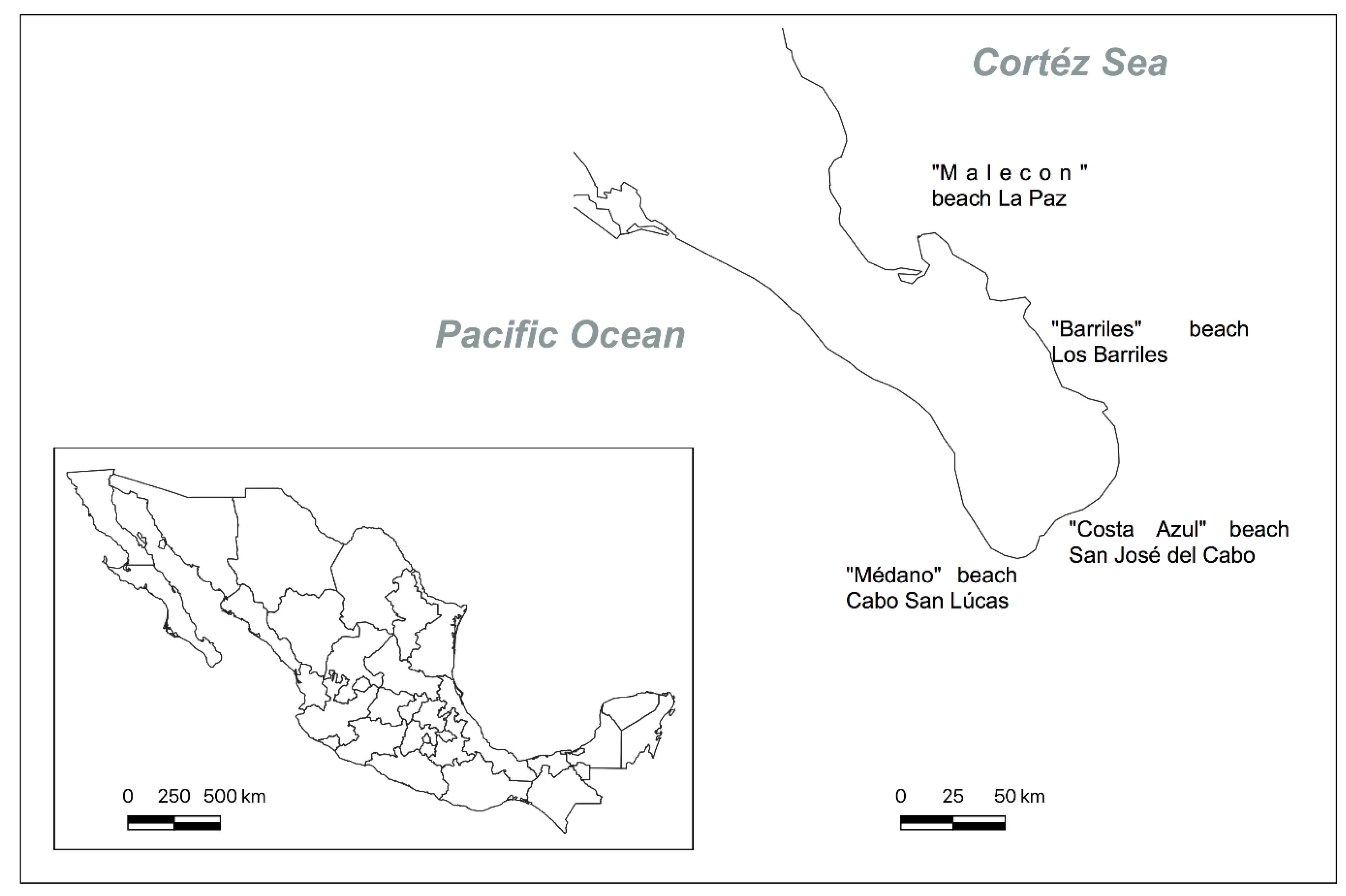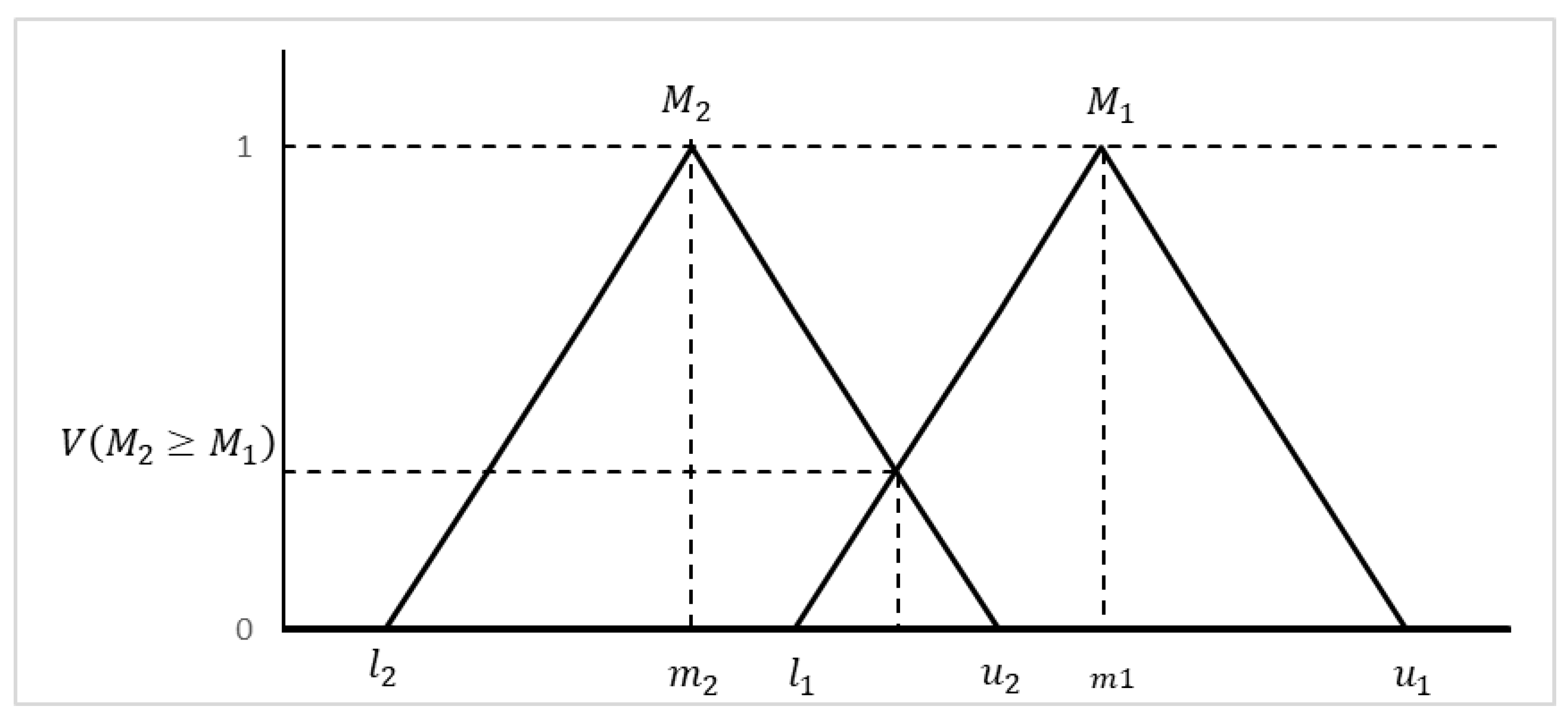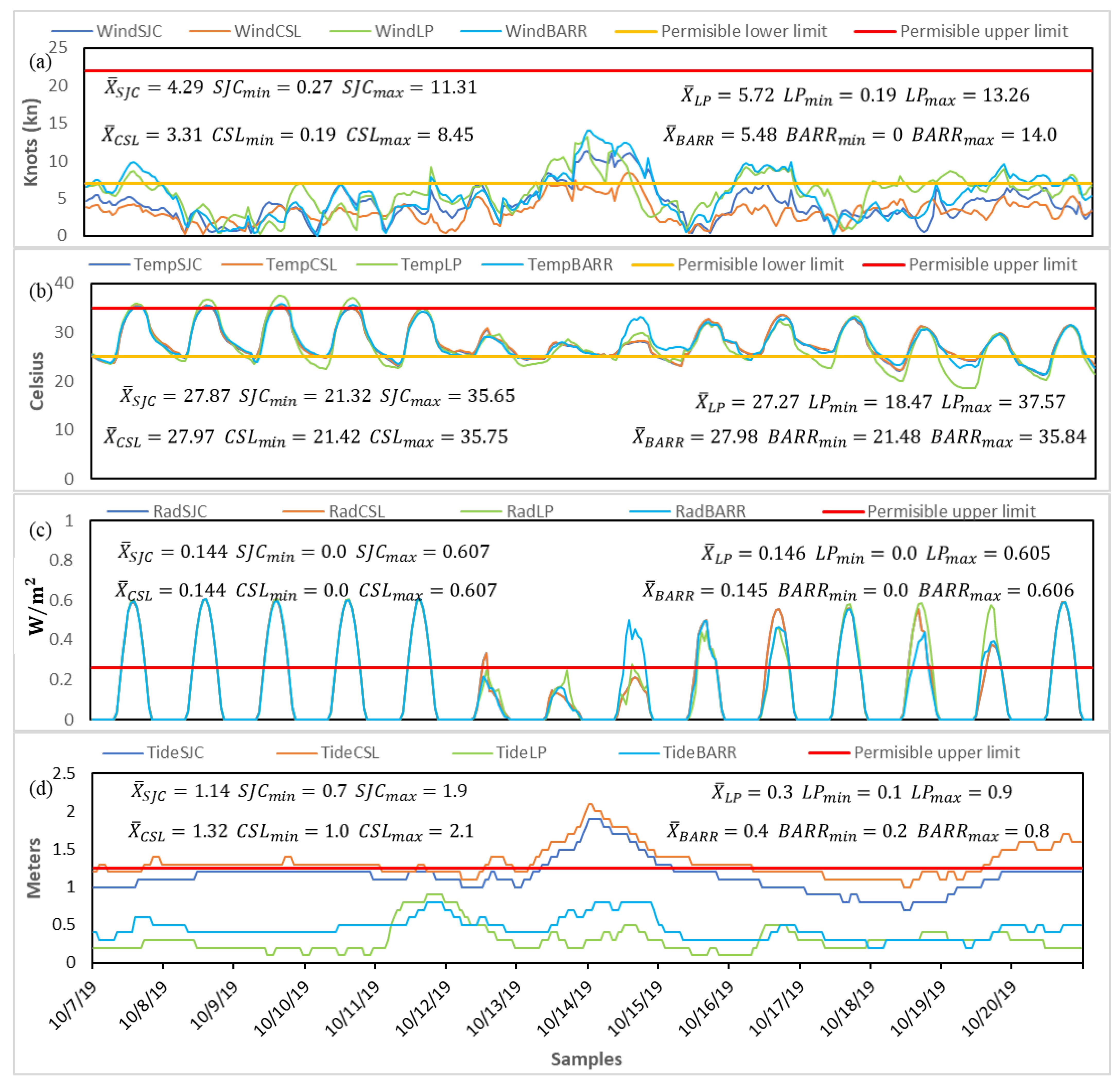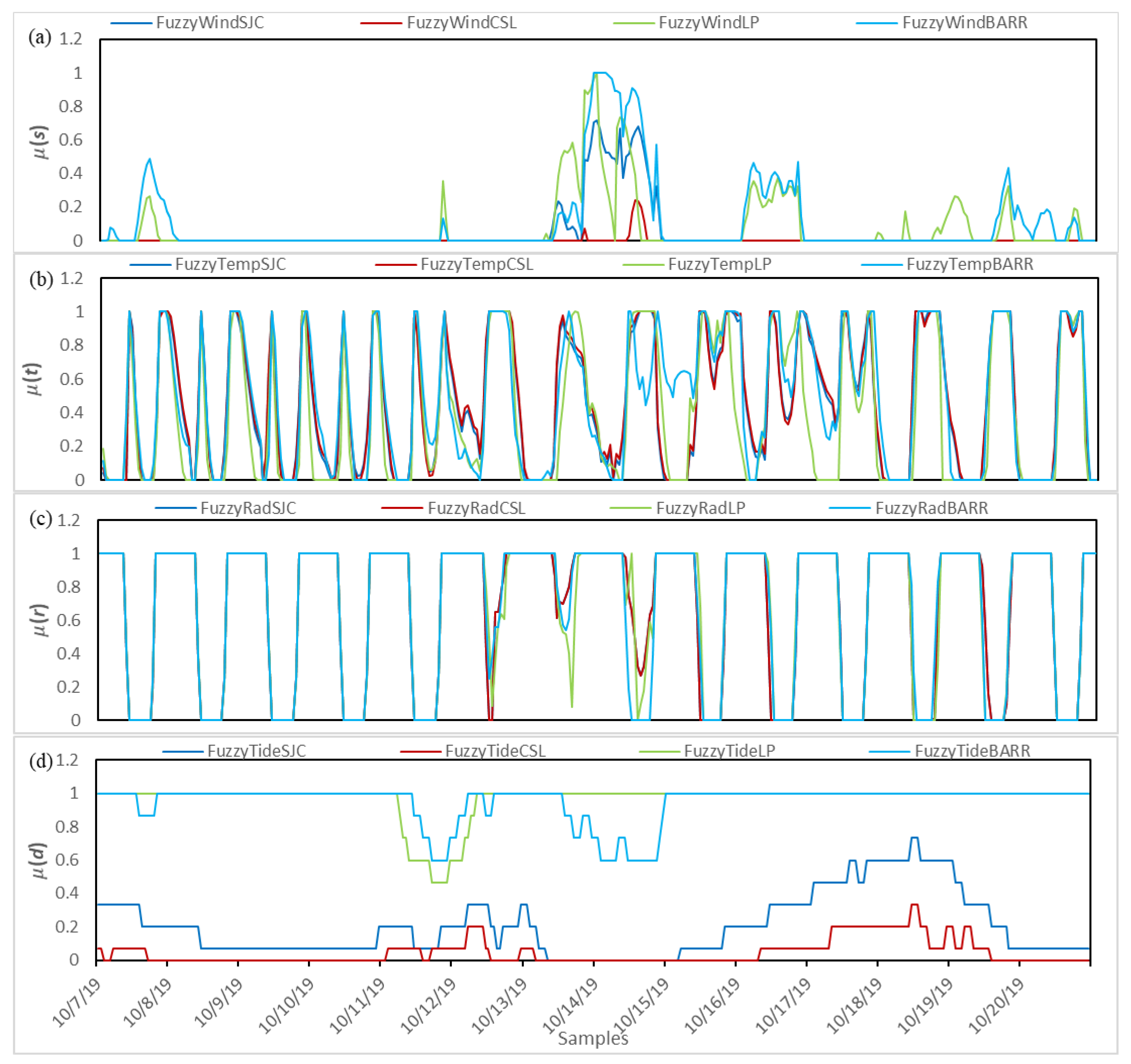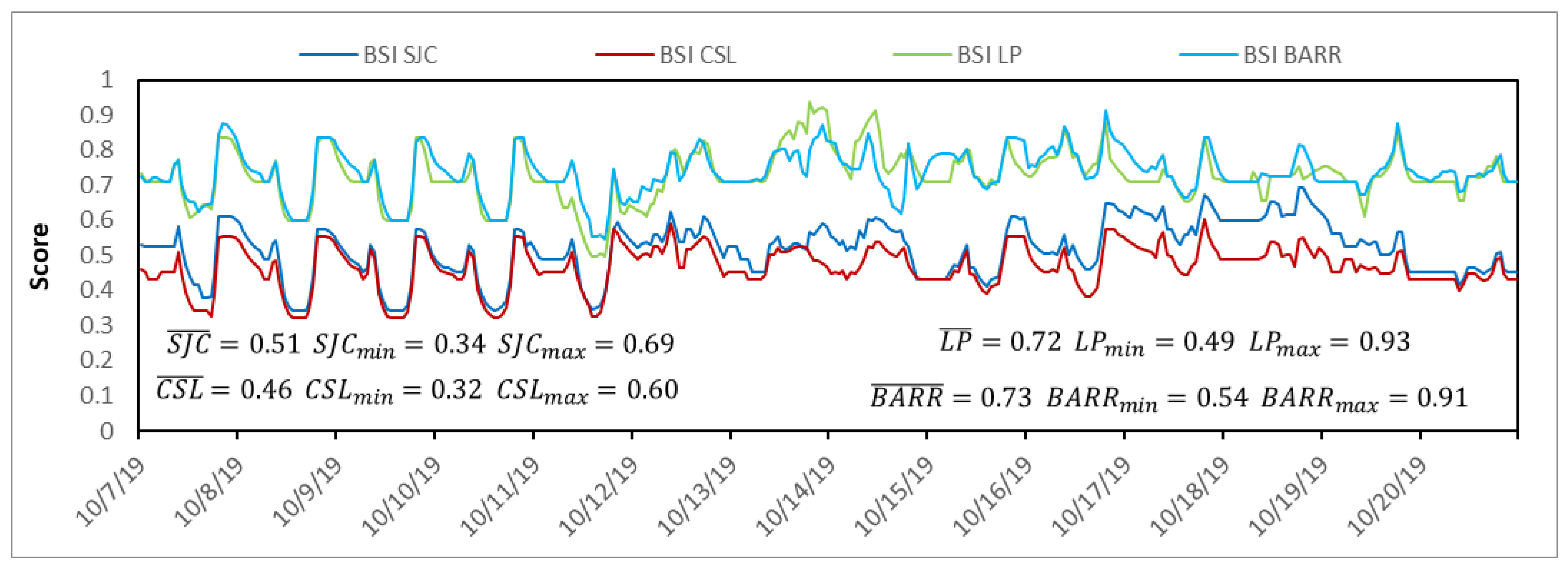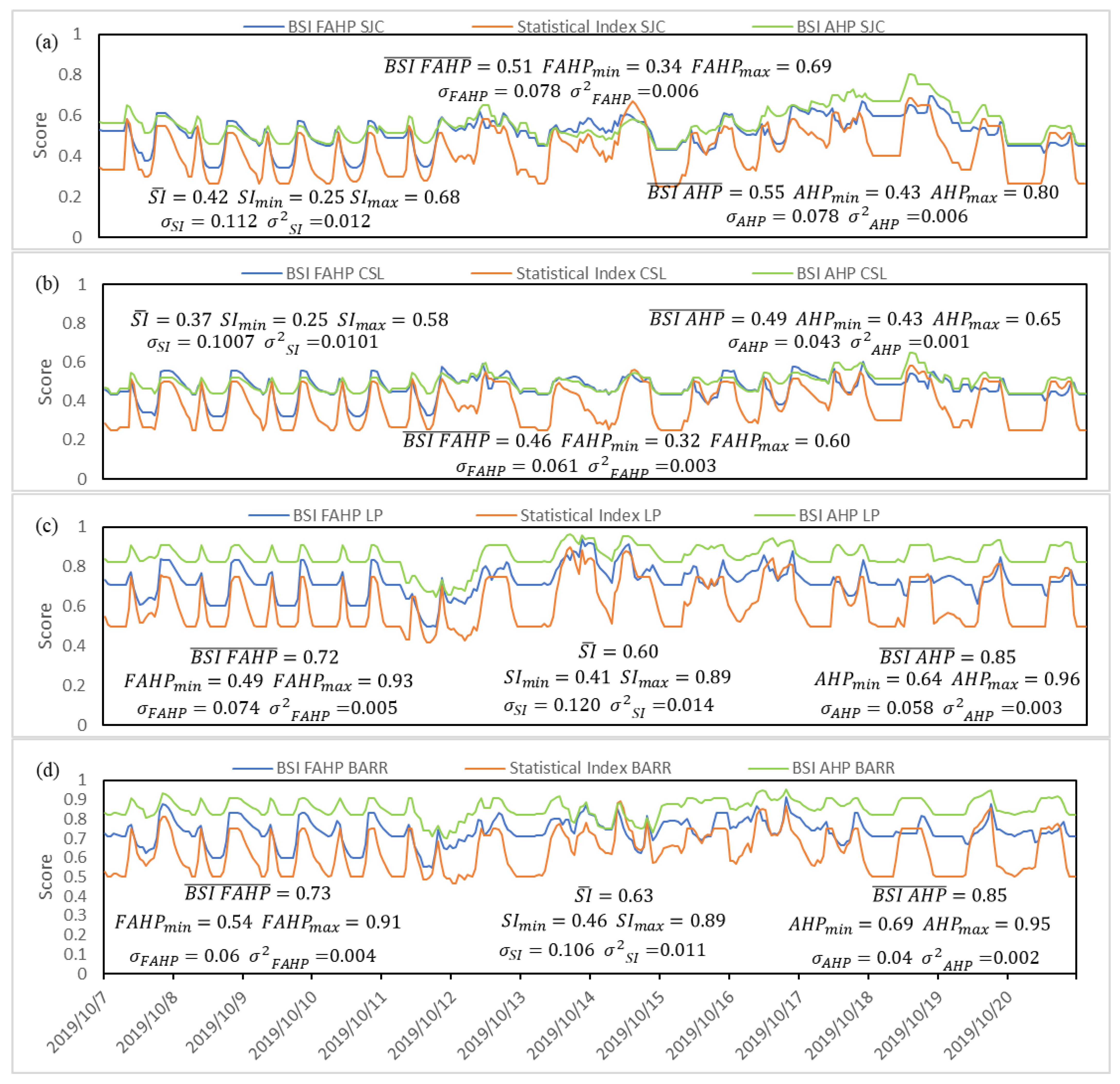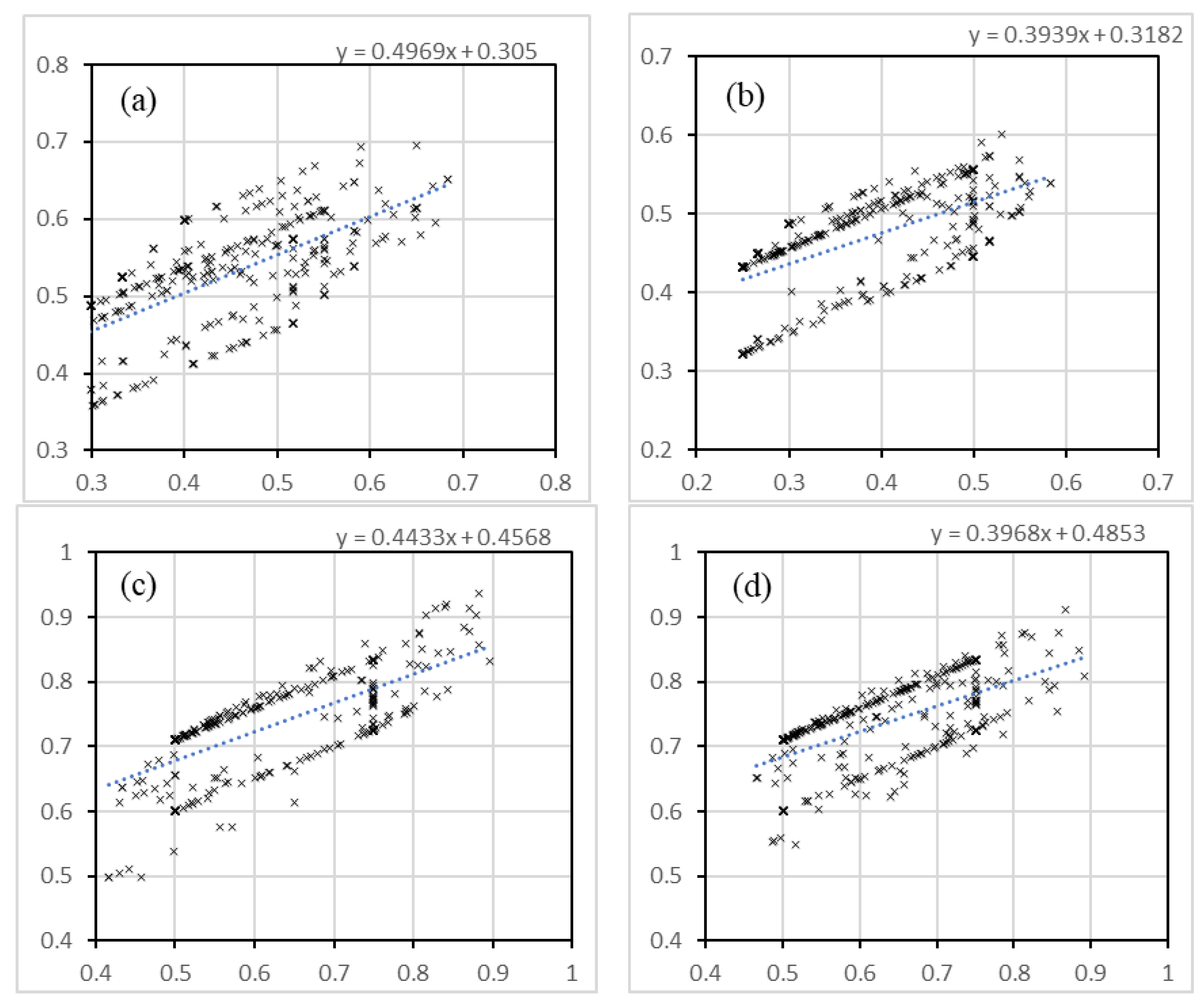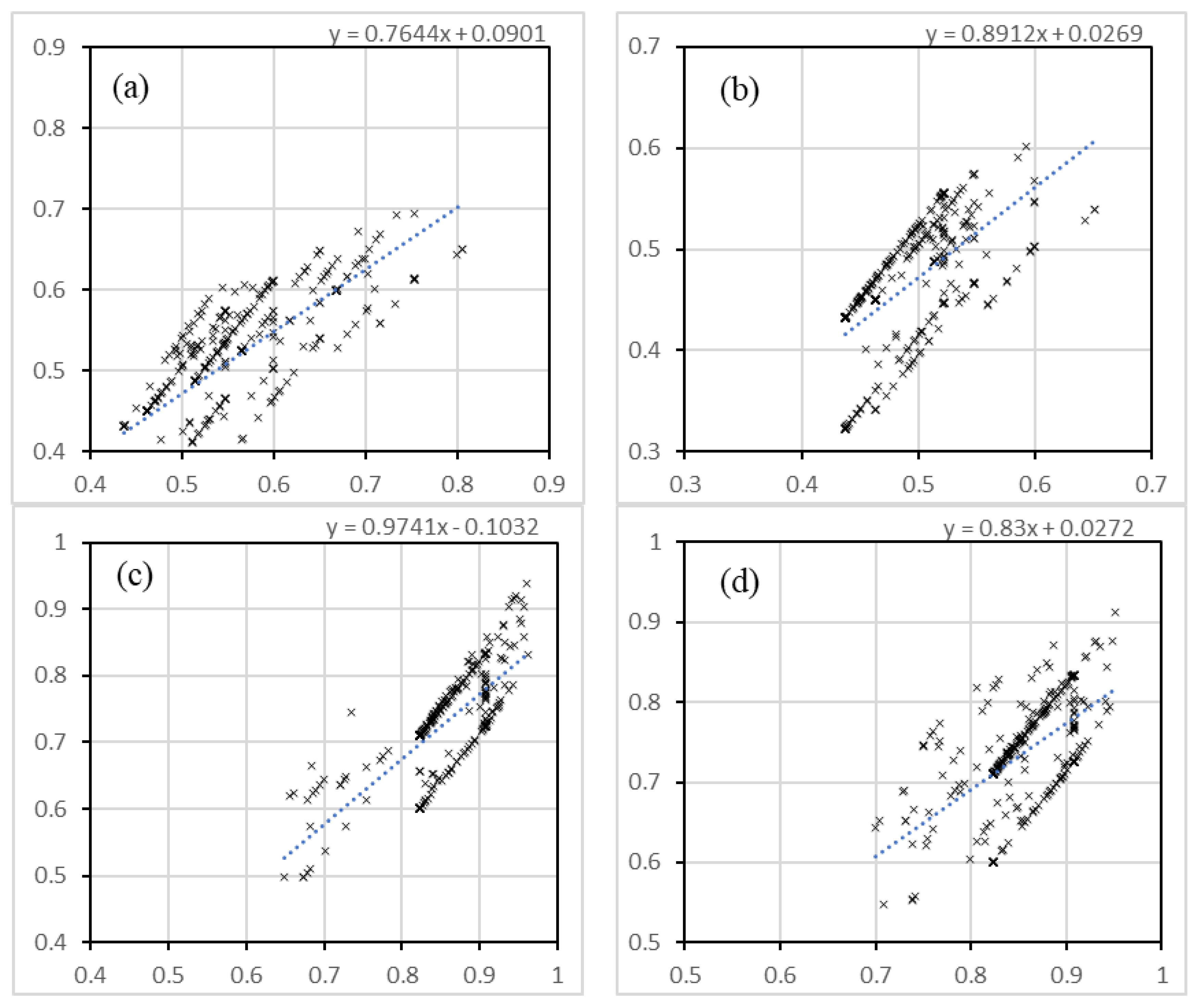1. Introduction
In several countries, tourism has become an essential economic income, and beaches are considered an important part of the tourist sector. Particularly in México, this industry grew by 12.7% in 2017 with the arrival of 3.4 million international tourists [
1]; 73% of the economic income associated with tourism proceeded from beach areas in this country [
2]. Notwithstanding the attractive beach and weather conditions, occasional natural events, such as red tide, sea, or environmental conditions, could represent a risk for tourism activities. At present, most of the efforts to assess security in coastal zones are limited to monitoring the height of the waves, and few metrics define if the conditions are safe for tourist activities. One of the most popular ways of assessing a beach location is the flag color-coding. Unfortunately, in a large number of tourist destinations, safety signs do not exist; moreover, some tourists ignore them, or do not know how to interpret them when they do exist, and this leads to many accidents being reported in these zones. Consequently, there is a need for a continuous assessment of safety conditions in tourist beach zones that considers the physical characteristics of the zone and its weather conditions. In this sense, some questions can be raised to determine if it is possible to improve the assessment of beach conditions using different oceanological parameters instead of just tidal height. Likewise, can different levels of hazardous conditions be assessed to alert visitors? To this end, we hypothesize that a model based on monitoring parameters with different importance levels and preferences can help determine good or bad beach conditions to provide real-time information about better and safer places for visitors.
A study of the existing risks in coastal locations in Australia and their signage is presented in [
3]; in this paper, results of beach user interviews are presented, demonstrating that almost half the visitors did not even see the signals. Hammerton [
4], by using interviews, determined that 82% of the participants knew someone who had drowned and that a significant number of the total drownings took place in the wave-dominated coastline of the analyzed cases in Ghana. Another study presented by Silva-Cavalcanti [
5] analyzed the locations of warning signals and the locations of drowning incidents, finding that the safety conditions did not always correspond with the warning signs. Different criteria have been defined to evaluate the safety level of areas for tourist activities. Nevertheless, there is a need to create tools for risk detection and the evaluation of suitable conditions for tourist activities in coastal zones, based on climate and physical parameters, and present them in an easily understandable way.
Some evaluations of coastal areas have been carried out from different perspectives. Considering beach quality, Leatherman [
6] presented a ranking of beaches, taking into account 50 physical, biological, and human parameters evaluated quantitatively, adapting the evaluation methodology from [
7] designed for river scenery. Looking also for beach quality, Micallef [
8] described a quantitative assessment in the region of Andalusia, Spain, that considers five beach parameters considered relevant, but only one of them forecasts safety. The evaluation of this one parameter contemplates the existence of infrastructure features and neglects the environmental or sea conditions. In the results of the works just mentioned, the evaluator perspective and preferences had importance, since the appraisal of some parameters comes from subjective judgments. Campuzano [
9] made characterizations of the Bahia Blanca in Argentina, employing data analysis and numerical modeling to improve the understanding of the dominant hydrodynamic processes in the area, providing useful information for the management of the area.
Moreover, taking into account coastal landscape assessment, Ergin, [
10] defined 26 parameters to evaluate coastal scenery through surveys of tourists and landscape perception experts in Turkey and the UK. For each parameter, five ranges of values or attributes were established. The parameters are integrated using a fuzzy logic approach (FLA), providing a general assessment that overcomes subjectivity and uncertainty. The mentioned methodology was applied to assess the landscape in coastal zones from the Western Black Sea, and the results were published in Ergin [
11].
In México, the analysis for coastal safety assessment is limited to the observation of the tide, calculation of the amount of stool, and the Blue Flag certification [
12], but there are few incipient models to integrate this study or provide results with important variables related to the safety of tourism in coastal zones. A first approach was proposed in [
13], where a safety index for coastal areas was proposed by analyzing tide, bathymetry, temperature, and wind speed; the parameters are integrated by employing an analytical hierarchy process approach for importance weight assessment. However, the parameters themselves do not define a safety condition as a whole, which is needed to determine when site conditions are dangerous or safe, using a site and priority classification.
On the other hand, multi-criteria decision making (MCDM) models are utilized in problems with multi-criteria dimensions, where each criterion can be quantitative or qualitative, and could present conflict with other input. Therefore, the output must be a compromise [
14]. For these properties, MCDM models have been applied with success in several disciplines, such as medicine, business, government, and environmental management. Particularly, in this last discipline, MCDM has solved complex problems; for example, in [
15], Deveci used a CODAS based model to identify the best rehabilitation solution for abandoned mines, and in [
16], the same author made a modification to the WASPAS model, applying Einstein norms in a fuzzy environment over triangular fuzzy numbers to assign priorities to climate change mitigation strategies in urban mobility planning. Furthermore, the most popular variety of MCDM model, especially in environmental science, is the AHP methodology [
17], which is flexible in considering a group of factors to combine the opinion of many experts, reducing complex problems into simple pairwise comparisons between elements [
18].
This paper presents the design of a computational model that assesses safety in coastal zones for the practice of tourist activities considering physical, oceanographic, and climatological variables, where the importance of each parameter is pondered and with the aim of providing information to visitors in an easy and understandable format that other evaluations do not consider, improving the actual safety evaluations and addressing the flaws. The relative importance of each evaluated parameter is assigned with a fuzzy analytical hierarchy process (FAHP) methodology because of its capacity to consider a group of factors and the opinion of many experts simultaneously, as well as prioritize the elements that have more impact on the overall evaluation. Then, all the parameters are integrated with a fuzzy logic approach, obtaining a Beach Safety Index (BSI) as a result. This paper considers the region of Los Cabos as a case study; this destination is located in the south of the Baja California peninsula, México, and it is one of the most important tourist destinations in the country, where tourism is the main source of income for the region. The climate conditions and favorable tide for surfing attract thousands of tourists each year, but not all beaches are adequate for bathing. The data provided from the existing infrastructure for the monitoring of physical and climate conditions, in addition, to the information obtained from previous research works [
19], are entered as inputs to the model. Temperature, solar radiation, wind speed, bathymetry, and tide height were the parameters selected for analysis and safety evaluation.
The rest of the paper has been structured as follows:
Section 2 explains the considerations for coastal safety conditions in tourist locations, as well as the model building process.
Section 3 describes the implementation of the proposed model and the data used for assessing specific beaches, and
Section 4 presents the discussions and suggests further work.
Literature Review
Several works have provided methodologies for beach assessment. In
Table 1, a summary of these works found in the literature is presented as it relates to the problem of the safety assessment of the beach zones and the MCDM models, as well as their principal contributions.
4. Conclusions
The computational model for the calculation of the BSI index proposed in this paper evaluates the safety conditions in beach zones, considering three principal risks for the tourist as factors, and five climatological and physical variables for the definition and calculation of each risk. The results of its implementation in four sites in Baja California Sur, México, are presented and discussed, successfully detecting the differences between the particular safety conditions of each of the sampling sites. Furthermore, continuous monitoring enables the model to reveal variations in the safety conditions during the sampling period. The proposal given in this work has been developed to provide information about excellent or bad conditions for tourist activities on beaches, taking into consideration the oceanographic and meteorological conditions at the site. The principal limitations of the case study detailed in this work are the variety in safety conditions, limited by the characteristics of the sampling sites and sampling period. Although the model generated in this research was applied to assess the safety of Mexican tourist beaches, it can be used in any tourist coastal zone in the world, simply by replacing input data with those of the locations of interest. This will allow for the testing of the model in a wider variety of conditions. For future work, more parameters have been proposed to be studied and analyzed, such as harmful wildlife, or ocean aspects; however, to consider more parameters in the FAHP methodology, the whole analysis must to be performed from the start. On the other hand, the integration of other techniques and computational models for better analysis is also proposed, such as the geospatial analysis, which could help improve the accuracy and granularity of the results, geographically differentiating the results in a beach zone. This model could be implemented to display to beach visitors the resultant evaluation in the form of a color-coded score, helping visitors to have a better understanding of the safety conditions in the location, and as a consequence, to avoid dangerous moments and areas, preventing accidents and providing a safe visit to tourist beaches. Safety and risk management has proven to be an efficient strategy of local administrations to improve the tourism offerings of their destinations, and consequently, to increase their regional economies.
